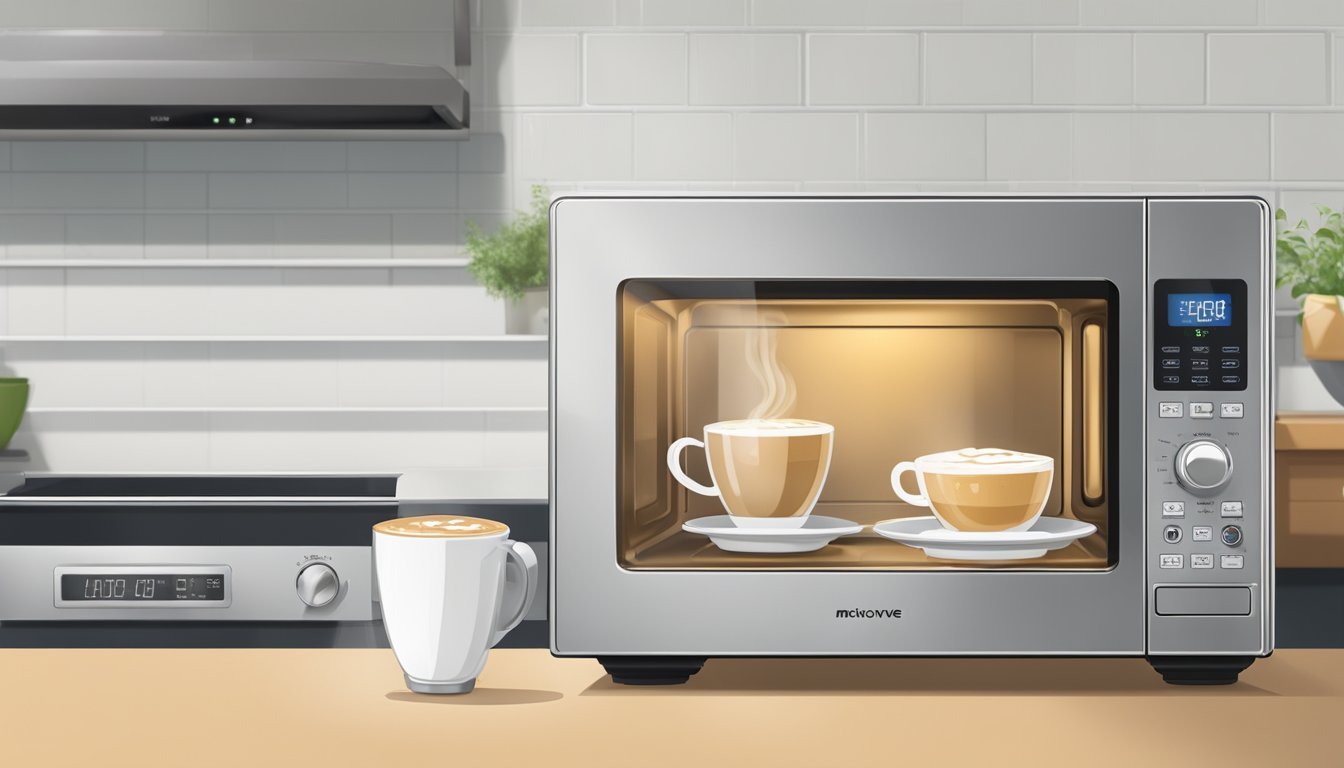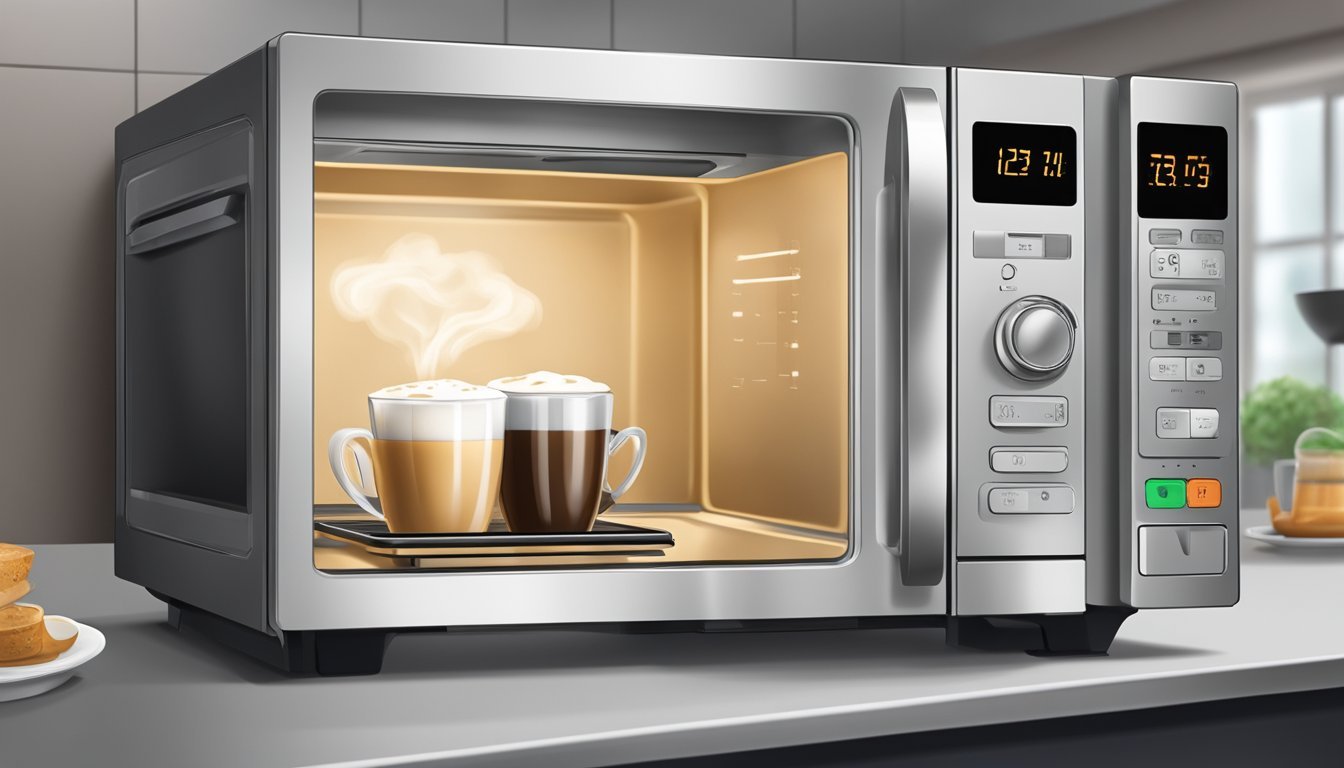Best Way to Reheat a Latte Without Scalding the Milk
Expert Tips for the Perfect Temperature
Reheating a latte presents a unique challenge. While it is easy to reheat coffee, ensuring the milk does not scald and lose its creamy texture and natural sweetness is crucial. The key to a perfectly reheated latitte lies in gentle and even heating. Milk scorches at high temperatures, which not only affects the flavor but also the nutritional value. It is important to approach the reheating process with a focus on retaining the original quality of the latte.
Several methods stand out for their ability to reheat a latte effectively without the risk of scalding the milk. The ideal technique revives the beverage to its just-brewed state, where the coffee is warm, the milk's sweetness is preserved, and the consistency remains smooth. Careful attention to temperature control is essential, whether using a microwave with short bursts of heat, a stovetop with constant stirring at low heat, or a steam wand that can gently reintroduce heat to the milk. Each method has its advantages, and selecting the best one depends on the tools at one's disposal and the level of precision they require.
Understanding Latte Reheating
When reheating a latte, it is crucial to have a solid grasp of the effects of heat on milk to avoid negative changes to the flavor and texture.
The Science of Milk and Heat
Milk is susceptible to changes in flavor and texture when exposed to heat. Heating milk too quickly or to a high temperature can lead to a burnt flavor and altered texture. Steamed milk, which is an integral part of a latte, achieves its rich, creamy texture from being heated at the right temperature. The ideal temperature for steamed milk in a latte ranges between 150-155°F (65-68°C). Beyond this point, milk starts to develop a bitter taste and can lose its smooth texture, resulting in a compromised latte experience.
Why Temperature Control Matters
Proper temperature control is crucial to reheat a latte without scalding the milk. Milk should never be heated beyond 155°F (68°C), as this increases the risk of burning, which not only affects the milk’s texture but can also cause flavor changes that detract from the quality of the latte. Gradual heating and continuous stirring are effective methods to distribute heat evenly and monitor the temperature closely.
Recommended Steps for Reheating Lattes:
Transfer the latte to a saucepan for stovetop heating or a microwave-safe mug for microwave use.
Heat at a low temperature, stirring regularly to prevent hotspots.
Check the temperature frequently using a thermometer to avoid surpassing the ideal temperature range.
By maintaining the correct temperature and employing gentle heating methods, one can reheat a latte while preserving its delicate balance of flavors and the silken texture of perfectly steamed milk.
Preparing Your Latte for Reheating
When reheating a latte, one should ensure to maintain the quality and flavor of the milk and espresso blend. Correct container selection, an understanding of ideal temperatures, and smart segmentation are crucial to the process.
Selecting the Right Container
Choosing an appropriate container is the first step. One must use a microwave-safe mug with a handle for easy removal without burning fingers. If using a stovetop method, a small saucepan is suitable as it allows even heat distribution.
Microwave Reheating: Use a mug with enough space to allow for stirring without spilling.
Stovetop Reheating: A saucepan with a heavy bottom is ideal to prevent scalding the milk.
Preheating and Temperature Primer
Understanding the temperature to which milk should be reheated is imperative. For both microwave and stovetop methods, one should never allow the latte to reach a boiling point. Milk develops a rich flavor when heated to approximately 155°F but starts to scald beyond 165°F.
Microwave: Preheat the latte in 15-20 second bursts, checking the temperature after each.
Stovetop: Heat on a low setting and constantly check the temperature.
Latte Segmentation Techniques
To prevent the espresso from overheating while ensuring the milk is adequately warmed, consider reheating them separately if the latte has been sitting for a while:
Milk: Heat milk in your chosen container, stirring occasionally to avoid hot spots.
Espresso: Gently reheat espresso separately to maintain its flavor integrity.
By reheating each component with care, one retains the harmonious blend of flavors in the latte.
Reheating Methods Compared
Reheating a latte requires careful temperature control to preserve flavor and prevent scalding the milk. Each method varies in its approach to achieving the desired warmth without curdling or scorching the milk.
Microwave Method
When using a microwave, one should transfer the latte into a microwave-safe container. Reheating should be done in short bursts of 15-20 seconds at medium power, stirring between intervals to distribute heat evenly. They must keep a close eye on the latte to avoid overheating, as microwaves can unevenly distribute heat and quickly lead to curdling.
Stovetop Method
The stovetop method involves pouring the latte into a small pot and gently warming it over low heat. Continuous stirring ensures the milk heats evenly, preventing hot spots that can scorch the milk. A thermometer can be used to monitor the latte's temperature, ensuring it does not exceed the desired temperature and maintains optimal flavor.
Steam Wand Reheating
Owners of an espresso machine with a steam wand may opt to use this tool for reheating. The cold latte is poured into a steam jug, and then, the wand is used to gently reintroduce heat. The steam should be applied gradually, while stirring the milk to provide a uniform warmth. This technique enables precise control to avoid the introduction of excess bacteria or altering the milk's texture.
Avoiding Common Reheating Pitfalls
When reheating a latte, one must carefully avoid curdling the milk, overheating, which leads to bitterness, and employing improper stirring techniques. The attention to detail in these areas ensures the latte retains its flavor, aroma, and smooth texture.
Preventing Milk from Curdling
To prevent milk from curdling during reheating, one should:
Reheat the latte on low heat; high temperatures can cause the proteins in milk to coagulate, leading to an unpleasant texture.
Use a thermometer to monitor the milk's temperature, ensuring it does not exceed 150°F (65°C), as beyond this point, curdling is more likely to occur.
Avoiding Overheating and Burnt Taste
To avoid the burnt taste caused by overheating, one must:
Heat the latte slowly, stirring frequently. This method prevents the formation of scorch marks that contribute to a burnt flavor.
Stop heating the latte before it reaches boiling point. Boiling can destroy delicate flavor compounds and intensify bitterness.
Stirring Techniques to Preserve Flavor
Proper stirring is crucial for preserving the latte's flavor during reheating:
Stir constantly and gently, using a back-and-forth motion, to distribute heat evenly without disrupting the latte's texture.
Employing a steam wand from a coffee maker, if available, provides the dual benefit of stirring and heating the latte gradually, helping retain its aroma and rich flavor profile.
Enhancing Your Reheated Latte Experience
When reheating a latte, one aims not only to achieve the perfect temperature but also to enhance flavor and presentation. Thoughtful additions and adjustments can elevate a simple reheated latte to an indulgent experience.
Topping and Cream Adjustments
Incorporating cream can enrich the flavor and texture of a reheated latte. One should consider the type of cream used; heavy cream adds richness, while a dollop of whipped cream serves as a light yet indulgent topping. Steamed milk can also be used to top the latte, providing additional warmth and a creamy layer. To preserve the aroma and texture, toppings should be added after reheating.
Choosing Sweeteners and Flavorings
The selection of sweeteners and flavorings can significantly affect the taste of a lathe. Classic sugar can be used, but one might also experiment with alternatives like honey or maple syrup. For a Starbucks latte experience at home, one might add vanilla or caramel syrup, ensuring it's stirred thoroughly to distribute the flavor evenly.
Serving and Presentation Tips
Presentation is crucial to replicating the coffeehouse experience. A reheated lathe should be served in a pre-warmed mug to maintain temperature. If one intends to transport the latte, a thermos can be used to keep it warm without scalding. Additionally, a light dusting of cocoa or cinnamon on top can add visual appeal and a hint of flavor.
Alternative Approaches
This section explores creative methods for reviving a cold latte, focusing on non-conventional techniques and devices designed for optimal reheating without altering the delicate flavors of the coffee.
Cold Coffee Transformation Options
Rather than reheating, one can transform a cold latte into a pleasing alternative. An iced latte can simply be refreshed with ice or blended with additional ice to create a smooth iced coffee. For those with a homemade latte that has gone cold, consider mixing it with a cold brew coffee concentrate to give it a stronger flavor and a chilled coffee experience. Oat milk, with its stability at different temperatures, could be a suitable addition to enhance the creamy texture without the risk of curdling.
Specialized Reheating Equipment
Certain equipment can offer a controlled reheating process to avoid scalding the milk:
Heating plates: A low-wattage heating plate can provide gentle warmth to a ceramic mug, slowly bringing the temperature of a hot latte up without overheating.
French press: For a homemade latte, using a French press to reheat by filling it with hot water, then discarding the water and adding the cold coffee can gently raise the temperature of the latte.
When using these methods, it’s important to monitor the temperature carefully, as the milk’s desirable properties can be ruined, with ph levels shifting and potentially causing the beverage to become sour. The goal is to reach a temperature where the latte is freshly made-warm, without compromising the flavor or texture.






